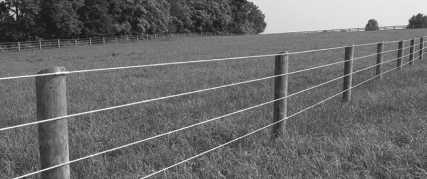
18 minute read
Marketing
Grain Outlook Corn market awaiting some news to move
The following marketing analysis is for the week ending Dec. 3. CORN — Corn got off to a rough start as the market continued to digest the possible implications of the Omicron deviant discovered just after Thanksgiving. Heavy fund liquidation was seen on both Nov. 29 and 30. This week’s low at $5.62.5 was the lowest March corn has traded since Nov. 9.
Advertisement
Fresh news specific to corn was thin without any export sales announcements and with the beginning of a new month. Funds sold an estimated 25,000 corn contracts early in the week, but bought back approximately 12,000 during the first three PHYLLIS NYSTROM days of December. March corn is CHS Hedging inC. back within the $5.70 to $5.95 St. Paul range it had been trading for the
Cash Grain Markets
corn/change* soybeans/change*
Stewartville $5.55 +.15 $12.15 -.05 Edgerton $5.76 +.04 $12.05 -.39 Jackson $5.74 +.07 $12.20 -.25 Hope $5.63 +.12 $12.12 -.18 Cannon Falls $5.54 +.12 $12.06 -.23 Sleepy Eye $5.73 +.11 $12.25 -.14 Average: $5.66 $12.14 Year Ago Average: $3.85 $9.09
Grain prices are effective cash close on Dec. 7. *Cash grain price change represents a two-week period.
last three weeks.
Weekly export sales were within expectations at 40.2 million bushels and the third-lowest in the last nine weeks. Total export commitments stand at 1.394 billion bushels, running 7 percent behind last year. We will need weekly sales to average 27.1 million bushels to hit the U.S. Department of Agriculture’s 2.5 billion bushel export target. Canada was the second-largest buyer this week and they continue to provide a good market for U.S. corn this year. The only new export sale announcement this week was 5.9 million bushels to Columbia.
The National Agricultural Statistics Service October Grain Crush report for corn used for ethanol was 469.3 million bushels, just shy of the 2017 record of 470.1 million bushels. Weekly ethanol production was down 44,000 barrels per day to a seven-week low of 1.035 million bpd. This remains above the needed pace to hit the USDA’s 5.25 billion bushel corn for ethanol forecast. Ethanol stocks were 137,000 barrels higher at 20.3 million barrels and the highest in 12 weeks. Lower production and higher stocks are not unusual for this time of year. Gasoline demand fell 538,000 bpd to 8.8 million bpd. Ethanol crush margins fell 29 cents but remain at a spiffy $1.31 per gallon.
The Buenos Aires Grain Exchange raised its Argentine corn acreage for this year to 18 million acres from 17.5 million acres. The USDA is using 16.8 million acres. However, they left production unchanged at 55 million metric tons compared to the USDA at 54.5 mmt. While La Niña concerns linger in the background, the BAGE rates their corn crop at 90 percent good/excellent. The corn crop is 31 percent planted. A well-respected private consultancy expects Argentina to produce 54.5 mmt of corn this year and Brazil’s corn crop to increase to 121 mmt. Agroconsult put Brazil’s corn crop at a record 124 mmt. The USDA has Brazil’s corn crop at 118 mmt.
Scott Irwin, an economist from the University of
See NYSTROM, pg. 11





We can’t promise you’ll trust your daughter’s prom date, but you can put your trust in a family-owned seed company.
Scan to watch the video


THE LAND Christmas & New Year EARLY DEADLINE
By KRISTIN KVENO In the summer, there’s plenty of weeding to do The Land Staff Writer around the trees. Guggisberg and his wife Marie NEW ULM, Minn. — Americans really like have six children, many of whom help at the tree their Christmas trees. According to the National farm. Christmas Tree Association, 25 to 30 million Every spring Guggisberg and his children real Christmas trees are sold in the United plant between 1,000 to 1,200 trees. They can States each year. Over 500 of those trees were hand plant 300 to 400 trees in a day. The trees sold the weekend after Thanksgiving at the are around 12 inches high when planted in the Guggisberg Tree Farm near New Ulm, Minn. ground.
Owner Tony Guggisberg started planting trees Once a tree is three years old it will need to be in 1994 on former corn and soybean ground. trimmed. Trimming is a vital task at the tree With a degree in horticulture and a keen inter- farm. Without it, the trees would not have that est in Christmas trees, Guggisberg is enthusias- desirable Christmas tree shape. Guggisberg uses tic about growing trees. a machete to give the trees a nice shape. He can
In 2006 the Guggisberg Tree Farm opened for trim 50 trees in an hour. customers to cut down their own trees. The farm In addition to planting trees every spring, sells seven varieties of trees: scotch pine, blue Guggisberg has the task of digging out the spruce, Black Hills spruce, white pine, Canaan stumps of trees which have been cut. It’s been a fir, Fraser fir and balsam fir. Every type of tree mild fall which has allowed Guggisberg to get a sold at the farm has its unique qualities. “Balsam start on stump removal. He uses the skid loader fir probably smells the best.” Guggisberg is grow- to dig out the stumps. ing a few hybrids, combining the finest of both varieties, like the balsam/Fraser hybrid which smells good and offers strong needle retention. A tree that won’t shed needles is high on most customers’ tree wish lists. Once the tree is taken home Guggisberg suggests keeping it away from Most of the trees sold at the farm are between seven and nine feet tall, though they do sell some that are up to 20 feet high. Customers pay by size, height and quality of the tree. “We usually have a tree for everybody.” heat and keeping it well watered to ensure it “The market for real trees the last couple of looks good throughout the holiday season. years has gone up,” Guggisberg said. The weekVisitors to the Guggisberg Tree Farm take a walk from the sale shed out to the tree groves where they the growing season. These were young trees and saplings. The rest of the trees exhibited stress due to the end after Thanksgiving this year, the farm had more than 1,000 people come to cut down their perfect tree. have the opportunity to cut down their tree. If cut- lack of rain. “They put on very little growth this The surge in popularity of fresh trees has been ting down a tree isn’t your thing, Guggisberg also year.” Losing hundreds of trees in a year is unusual wonderful for Guggisberg. However, it takes up to 10 sells his trees at River Creek Nursery in New Ulm. for Guggisberg. “On a good year, I probably lose five years for a tree to grow to the height fit to be cut. Tree farming isn’t easy. Mother Nature can provide many obstacles in the growing and selling season. A few years ago, wet growing conditions resulted in the death of a couple of hundred trees on the farm due to root rot. This year, Guggisberg reported that 300 to 400 trees died as a result of the lack of rain during to 10 trees.” A blizzard during the second weekend of selling trees one year resulted in a single customer who braved the elements to get a tree. Weather can make or break both growing and sale seasons. Besides weather, pests can be a problem as well. Guggisberg tries to figure out the trends, but it was impossible to predict a pandemic was on the horizon when he planted trees a decade ago. “Last year was the first time we had to close early.” Selling out the trees so quickly was a pleasant surprise for Guggisberg. It was an ideal outside family activity. Getting a fresh tree became a popular thing to do. “Spider mites and aphids can attack trees,” This year was another stellar sales season for Guggisberg said. The spider mites may turn the trees Guggisberg. to an off-color. Guggisberg sprays for pests as needed. In addition, pocket gophers will eat the roots of young trees, so Guggisberg is always on the lookout for those pesky varmints.
Photos by Kristin Kveno Tony Guggisberg looks over a stand of trees which will be ready for cutting for Christmas 2022. With a 10-year growing window, weather and pests can have a lasting effect on Guggisberg’s trees. These trees have a few years to go before they’re ready to sell.
Deadline for Dec. 24, 2021issue is Tues., Dec. 14th at noon. d
Deadline for Dec. 31, 2021issue is Tues., Dec. 21st at noon.
CUSTOM FENCE BUILDERS


NYSTROM, from pg. 9
Illinois (my alma mater), participated in the Illinois Farm Economic Summit this week and said 2022 U.S. corn acres will rise by 3 percent despite the high cost of fertilizer. He predicts corn acres will increase 2.7 million acres to 96 million acres and soybean acreage will decline 1.7 million acres to 85.5 million acres. With normal weather and yields, the corn crop next year could be a record 15.9 billion bushels. Outlook: Big picture factors are carrying the weight in the markets with Covid variants leaving traders to wonder what various governments’ reactions may do to demand and economic direction. Domestic demand for corn has stayed firm with bin doors closed and prices not at high enough levels to draw bushels into the pipeline. The nearby corn spreads have narrowed significantly to reflect nearby demand needs. March corn’s recovery puts it back into its $5.65 to $5.95 per bushel trading range set in November.
For the week, March corn fell 7.75 cents to $5.84, July down 10.5 cents at $5.85.5, and December 2022 dropped 10.24 cents to $5.52.25 per bushel.
The December World Agriculture Supply and Demand Estimates report will be released on Dec. 9. The average trade estimate for U.S. corn ending stocks is 1.487 billion bushels vs. 1.493 billion last month; world ending stocks 304.47 mmt vs. 304.42 mmt last month; Argentina’s corn crop at 53.96 mmt vs. 54.5 mmt last month; and Brazil’s at 118.26 mmt vs. 118 mmt last month. SOYBEANS — Soybeans suffered the same rollercoaster ride as corn as the January contract dropped to its lowest since Nov. 11 in post-Omicron trading. The $12.00 level was never tested, but it did cause one to pause when January traded as low as $12.14.25 per bushel. Soybeans rallied in the second half of the week when new sales were announced, and a late-week friendly canola report propelled soyoil higher.
New soybean export sales were announced three times during the week to both China and unknown, which most will assume were to China. Soybean oil was chaotic during the week and traded a huge range from 54.59 to 60.25 in the January contract. It closed near the middle of the week’s range. January soymeal closed near the week’s high after trading a wide 338.10 to 360.50 range.
Crude oil has closed lower on the weekly chart for the last six weeks. OPEC plus met this week and reaffirmed they will honor the 400,000 bpd production increase in January, but also said that could change at any time if demand wanes.
Weekly export sales were on the lower side of estimates at 39.1 million bushels and the lowest in eight weeks. China accounted for approximately 65 percent of the week’s sales. Cumulative sales are 1.365 billion bushels and are 29 percent behind last year. We need to average 17.4 million bushels of sales per week to reach the USDA’s 2.05 billion bushel outlook. China’s total U.S. purchases so far this year are 749.6 million bushels vs. 1.091 billion bushels last year by this date. Net cancellations for the 2022-23 crop year erased all previous sales. New export sales announcements this week included 15.3 million bushels to unknown and 4.8 million bushels to China.
The NASS October Oilseed Crush report showed a record 197 million bushels of soybeans were crushed. Soyoil stocks were higher than anticipated with a record oil yield.
StatsCan showed their canola production slightly below trade expectations at 12.6 mmt vs. the estimate for 12.8 mmt and 12.8 mmt previously. This is the lowest production since 2007.
The BAGE rated Argentina’s soybean crop at 88 percent good/excellent with 46 percent of the crop planted. Their crop estimate is 44 mmt vs. USDA at 49.5 mmt. A well-known private consultancy estimates Argentina’s soybean crop at 49.5 mmt and Brazil’s at 145 mmt (USDA at 144 mmt). Brazil’s government will keep the 10 percent biodiesel blend for 2022 to crushers consternation. The rate had been cut from 13 percent earlier this year on soyoil shortages. Crushers predict their crush will be down 6 mmt due to the change.
Customers are best part of selling trees
TREES, from pg. 10
The farm has saws for customers to use. For safety reasons, chainsaws are not allowed. Once the tree is cut, employees put the tree in the shaker which rids the tree of loose needles and loads it onto the car.
“We basically don’t have to advertise anymore.” Guggisberg’s wife Marie and daughter, Rachel, manage the farm’s social media pages and those posts bring in the crowds. This year that resulted in selling out of the Christmas trees at the farm in just a few days.
Why cut your tree? Guggisberg believes his customers like to cut their own tree, knowing that it’s fresh. After Christmas, many people put the tree outside for their feathered friends. “It’s one of those great renewable resources. A lot of people set them out for the birds.”
Just as any farmer would tell you, weather can be a challenge, and tree farming is no exception. Losing trees in drought or wet years can be frustrating, as is battling gophers and other critters chewing up young trees.
The best part of owning and operating a tree farm for Guggisberg is the customers. He›s grateful the tree farm is part of a holiday tradition for many who come from near and far to pick out their trees. “Seeing all the families have a good time. We’ve met so many great people.”
Visit Guggisberg Tree Farm at https://www.guggisbergtreefarm.com/trees.html. v
The Dec. 9 WASDE report may include a cut to U.S. exports. China currently has bought 20.4 mmt of U.S. vs. 29.7 mmt last year by this date. Some traders believe China’s soybean imports from the United States this year could decline to below 30 mmt vs. last year’s total of 35.5 mmt. Some factors to consider are Brazil’s crop will be available earlier this year than last year, weaker hog margins, and Brazil’s higher protein content. Outlook: After a rocky, Omicron variant influenced start to the week, soybeans rallied to end the week on a positive note. Market volatility will stay with us directed by weather and Covid news. Brazil’s early soybean harvest will be here before you know it. January soybeans haven’t traded above $13.00 per bushel since Sept. 30, so it will take more positive news to overcome that obstacle. Buying has surfaced when prices have faded below $12.25 per bushel. South American weather and Chinese interest will be factors to watch in addition to any Covid/lockdown news.
For the week, January soybeans rallied 14.5 cents to $12.67.25, July was 5.25 cents higher at $12.84, and November 2022 fell 6.25 cents to $12.34 per bushel.
The average trade guesses for the December WASDE report: U.S. ending stocks at 352 million vs. 340 million last month; world ending stocks at 104.13 mmt vs. 103.78 mmt last month; Argentina’s soybean production at 49.39 mmt vs. 49.5 mmt last month; and Brazil’s soybean production at 143.79 mmt vs. 144 mmt last month. v
Acres: 138.18
XXX 80th Ave. NW 23/119/41 • $795,500
Prime productive farmland Chippewa county, Montevideo w a CPI of 90.7. Fall possession. Proposed tiling maps have been done with verbal agreement from neighboring property owners for drainage easements. Good access. Add this productive ground to your operation.
By RENAE B. VANDER SCHAAF
The Land Correspondent LE MARS, Iowa — Big city lights may be attractive to some young farm boys, but for Rob Scheitler of Le Mars, Iowa it was the Christmas lights that enthused him. His parents annually took several drives to see the displays in area towns.
By age 12 he was already decorating their farmstead with lights on the fences, trees and buildings.
“Then my dad joined in the action,” said Scheitler. “He put lights on the tractors and farm implements. These were the type of lights that made the machinery look as though it was running.”

Photos by Renae B. Vander Schaaf When it gets close to 5 p.m. the Christmas decoration enthusiasts start driving in to the Scheitler family farm.
We’re Here to Help Doers Like You
We founded Minnwest Bank during the 1987 farm crisis because we recognized how important community banks are to thriving communities. Since that time, we’ve steadfastly served and supported our communities through good times and bad.
At Minnwest, we don’t just say our customers come first, we live and breathe it. That’s our commitment to you.
Doers Welcome.™
MEMBER FDIC

»minnwestbank.com

Shaunna, Joyce and Rob Scheitler (left to right) started their Christmas chaos 25 years ago.
Take-down begins in January, weather permitting. Both Rob and Joyce Scheitler have full time jobs, so the work is done after hours and on days off. The help from volunteers is very much appreciated.
“Every things is labeled, cleaned up and stored,” said Scheitler. “Every year it goes back to the same place outside.”


Twenty-five years ago, Scheitler and his wife, Joyce, built their new home just north of the family farm. That first year they began their own Christmas display.
“It was easy to decorate the trees then,” laughs Scheitler. “They were just small ones. Now it is a quite a task.”
But that doesn’t seem to deter the Scheitler family which now includes daughter Shaunna (a student at the University of Northern Iowa) from undertaking this immense decorating job each year. It may well be the largest the outdoor country display in the state of Iowa, certainly in the area.
This isn’t just a driveby display. Well-lit walking paths bring visitors up close to the lights and decorations.
The work begins in August with deco- See CHRISTMAS ACRES, pg. 13 rating the trees and bushes. Scheitler does his last mowing Oct. 1, at which time he begins laying wires and setting out decorations. The items in the fields go out once the crops have been harvested. The LED lights are on from 5 to 10 p.m. each evening, weather permitting. When Christmas Light devotees began handing the Scheitlers money, they felt a bit uncomfortable. This Christmas train brings good cheer. “My wife said this isn’t why we do this,” said Scheitler. “She said we were going to find a charity.”

CHRISTMAS ACRES, from pg. 12
So they did. All the donations go to the Christian Needs Center in Le Mars — a charity which provides food, clothing and other items to people in need.
“Last year, we donated $41,000,” said Scheitler. “The Center was able to pay off unpaid lunch balances of students in Plymouth County. They also bought winter clothing for those that were without.”

Rob Scheitler hands out candy canes to Kayla Lund and Grace Pauley visiting from Shelby, Iowa. The lights begin to shine as the sun sets in the west at Christmas Acres.
Lois Ernst and her molasses cookies. Santa Claus can be found everywhere.
The homemade treats are available on Friday and Saturday night in the garage. Besides Rob and Joyce, Rob’s mother, Lois Ernst, helps out. Her specialty is molasses cookies. The
The Christmas decorations continue money from the baked goods funds their to multiply each year. Scheitler has fun daughter’s college education. in his workshop. Some items have been Another new item donated. Others are purchased from this year is local Christmas decorator aficionados (many honey from neighof whom are in their upper 80s and into bors Dean and Barb their 90s) who have retired from set- Johnson. The ting out their displays. Adaville Honey
Last year, the Scheitlers added a Company earned its bake shop in their garage. Many years name for a small ago Joyce sold homemade jams at a town which existed local farmer’s market. As her success for just a few years grew, they began adding baked goods. around the turn of Rob became well known for his pies. the 19th century. They wondered if they could continue the business in their garage.
In honor of Christmas Acres, Virginia Freyermuth of Le Mars designed and sewed a quilt. This quilt is being raffled off. She had one stipulation: the money raised stays with the Scheitler family.
The Scheitler family also have one stipulation: “Have yourself a merry Christmas!”
Christmas Acres is located at 18481 Impala Ave., Le Mars, Iowa (seven miles west of Le Mars on Highway 3, then south on Impala Ave.) The Scheitlers can be reached at (712) 5410577. v






We can’t help your daughter get straight A’s, but we can help you get the best genetics for your farm.
Scan to watch the video




